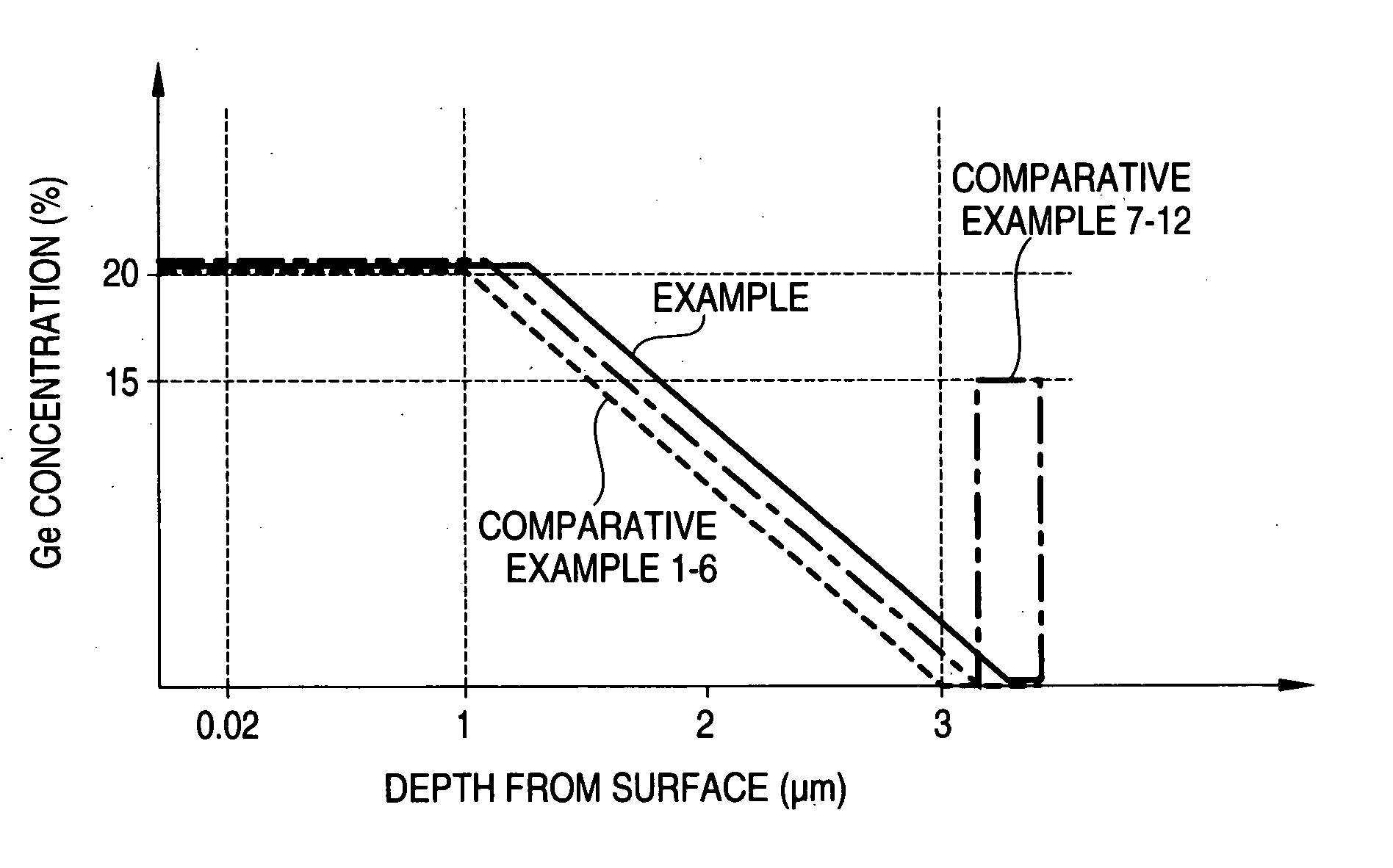Manufacturing method for strained silicon wafer
a manufacturing method and silicon wafer technology, applied in the direction of basic electric elements, electrical apparatus, semiconductor devices, etc., can solve the problems of increasing junction leak current, generating uneven cross-hatching, and generating similar dislocations at high density, so as to reduce the degree of freedom in the device process, the effect of increasing the film thickness
- Summary
- Abstract
- Description
- Claims
- Application Information
AI Technical Summary
Benefits of technology
Problems solved by technology
Method used
Image
Examples
examples
[0057] The present invention is described in greater detail below by referring to Examples, but the present invention is not limited to these Examples.
examples 1 to 6
[0058] On the mirror-polished surface of a single crystal silicon substrate, an Si1-xGex composition-graded layer of which the Ge concentration x is varied in 10 steps within the range of 0≦x≦0.2 was epitaxially grown to a film thickness of 2 μm.
[0059] Subsequently, an Si0.8Ge0.2 uniform composition layer of which the Ge concentration is constantly 20% was epitaxially grown thereon as a strain-relaxing layer to a film thickness of 1 μm.
[0060] Furthermore, an Si0.85Ge0.15 uniform composition layer of which the Ge concentration is constantly 15% was epitaxially grown thereon to a film thickness of 20 nm.
[0061] Thereafter, on the surface of this layer, a strained Si layer was formed by changing the film thickness so as to prepare six samples of strained silicon wafers (Examples 1 to 6).
PUM
| Property | Measurement | Unit |
|---|---|---|
| thickness | aaaaa | aaaaa |
| resistivity | aaaaa | aaaaa |
| thickness | aaaaa | aaaaa |
Abstract
Description
Claims
Application Information
 Login to View More
Login to View More - R&D
- Intellectual Property
- Life Sciences
- Materials
- Tech Scout
- Unparalleled Data Quality
- Higher Quality Content
- 60% Fewer Hallucinations
Browse by: Latest US Patents, China's latest patents, Technical Efficacy Thesaurus, Application Domain, Technology Topic, Popular Technical Reports.
© 2025 PatSnap. All rights reserved.Legal|Privacy policy|Modern Slavery Act Transparency Statement|Sitemap|About US| Contact US: help@patsnap.com


